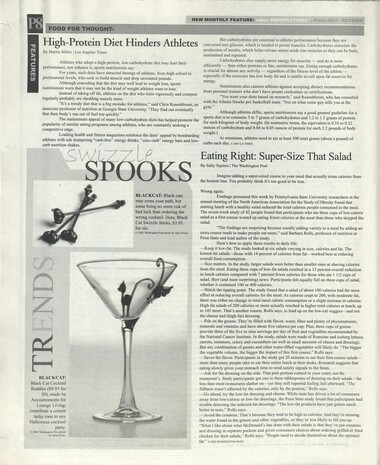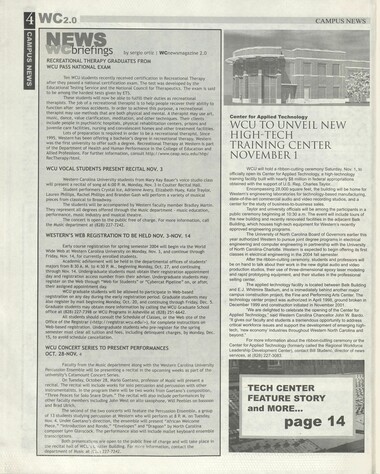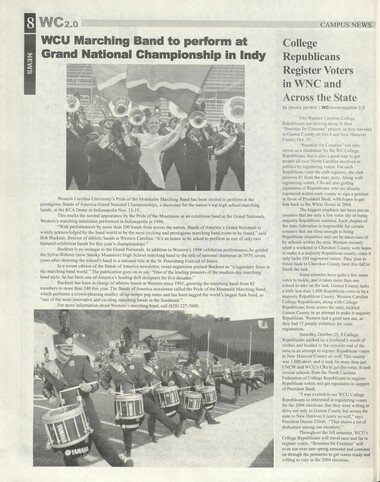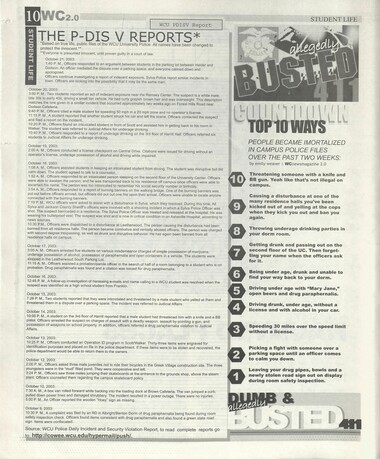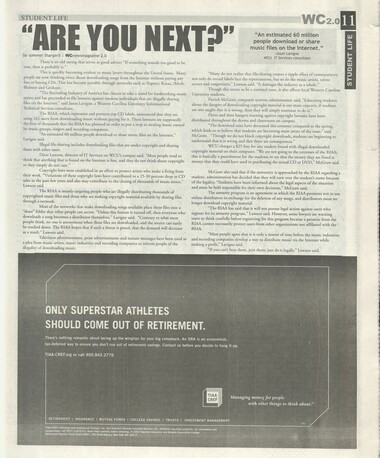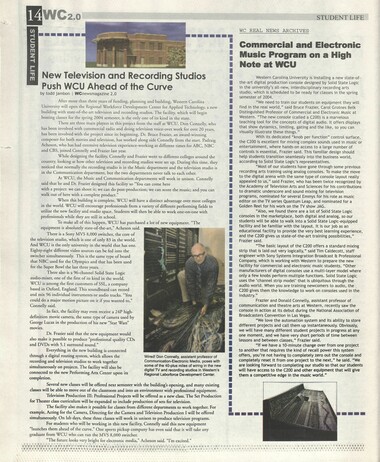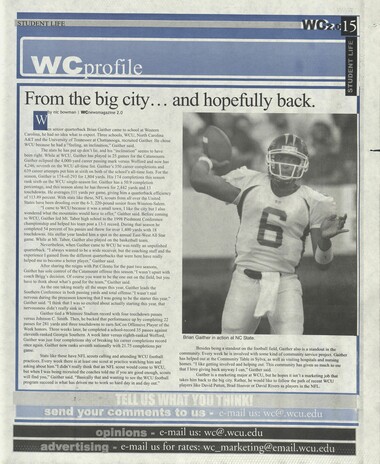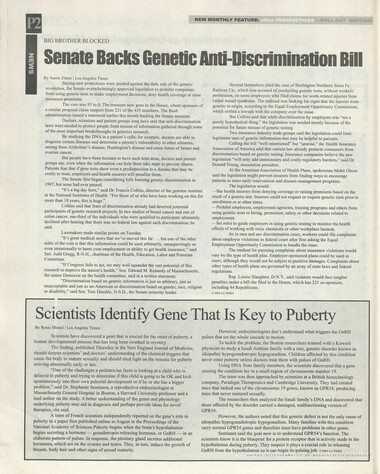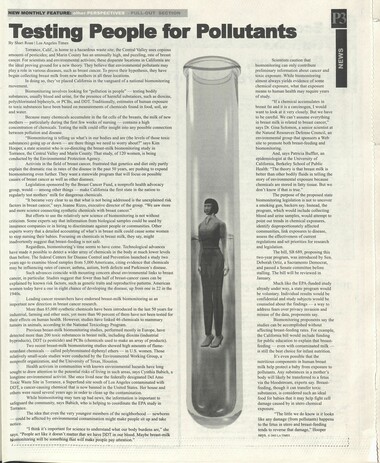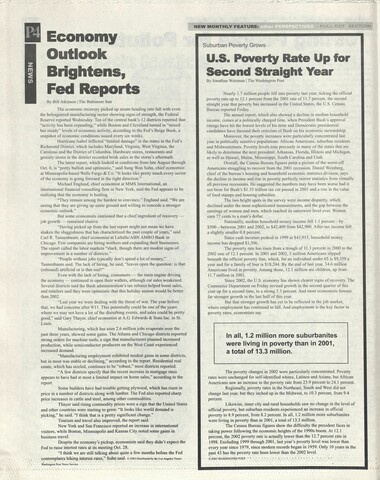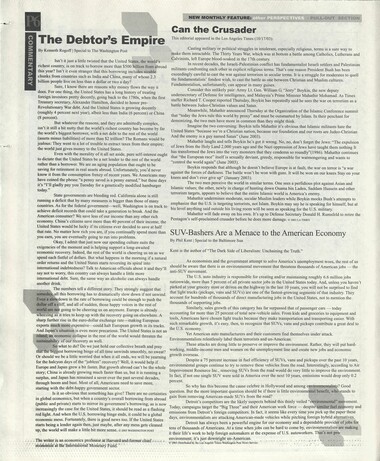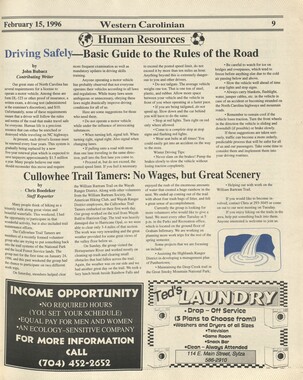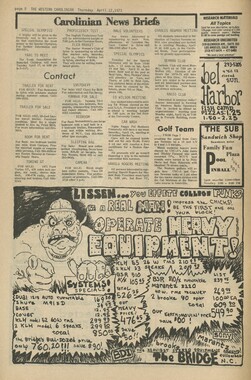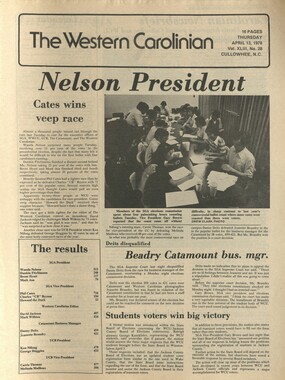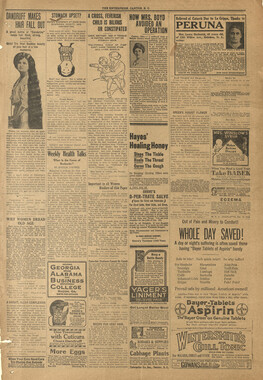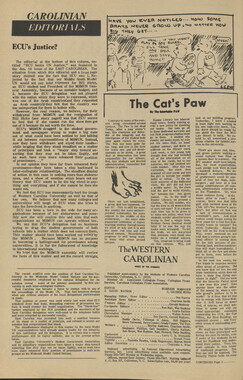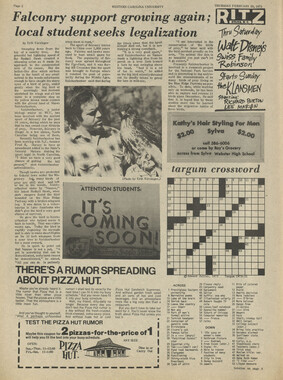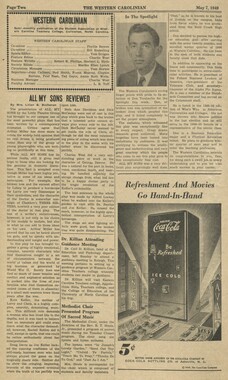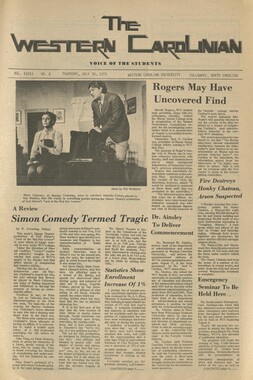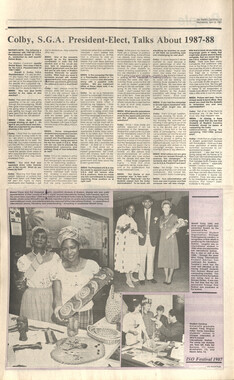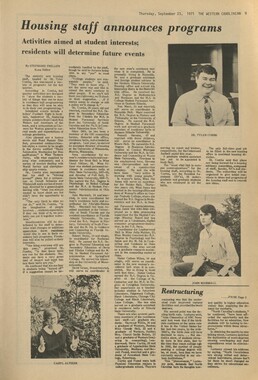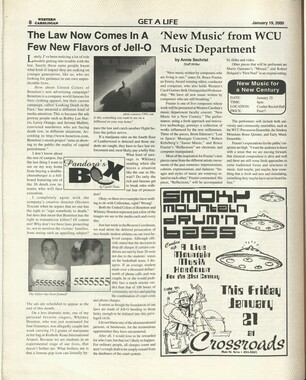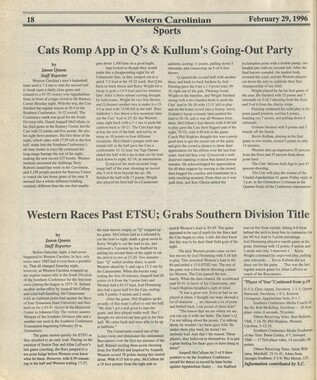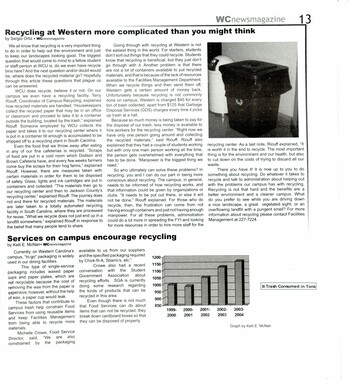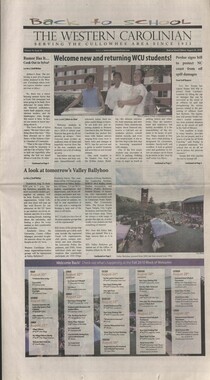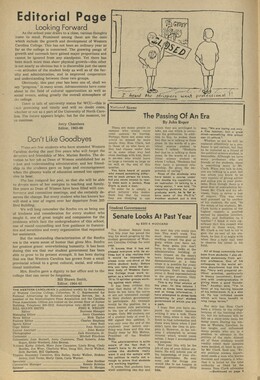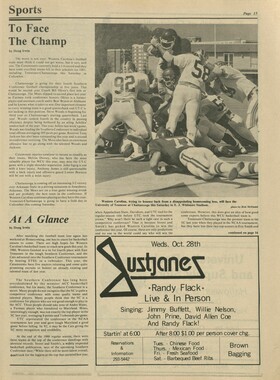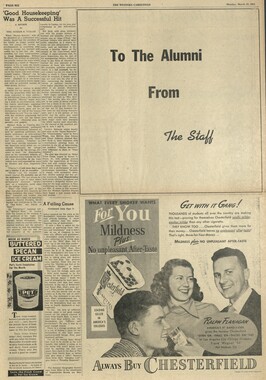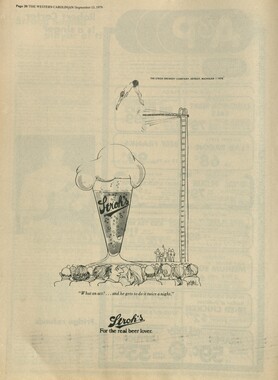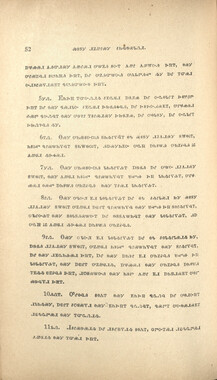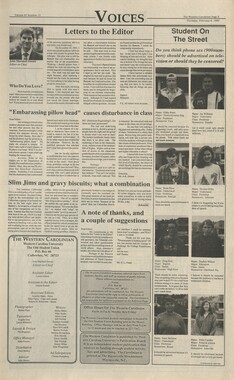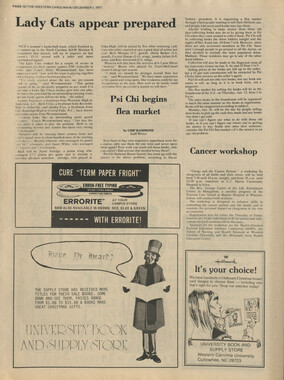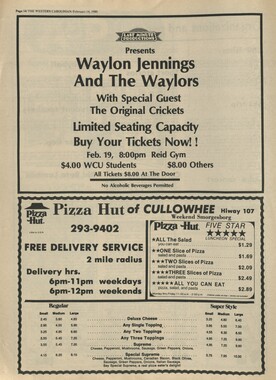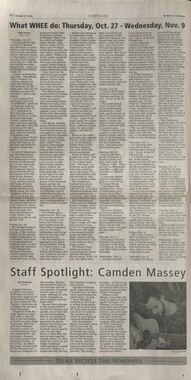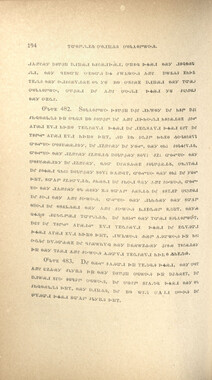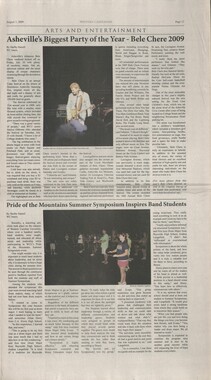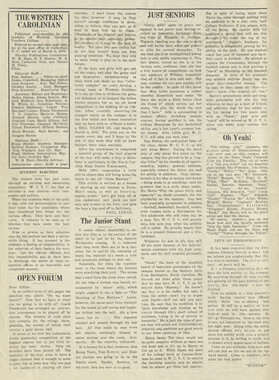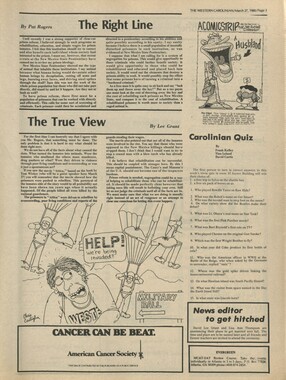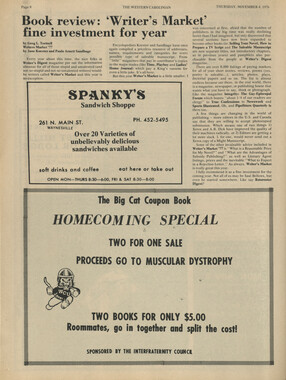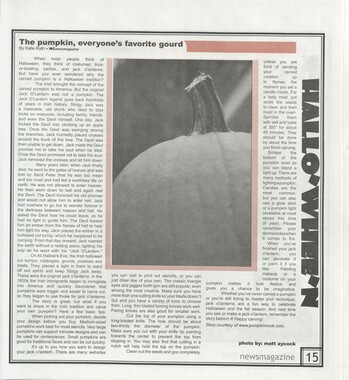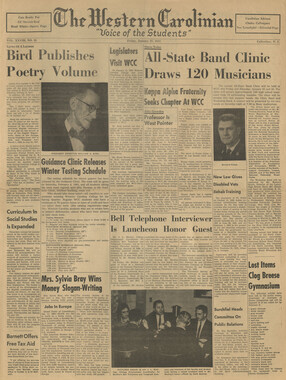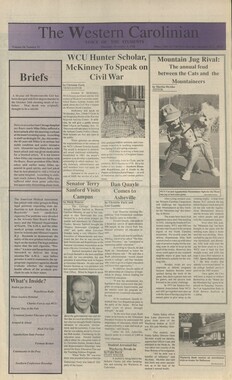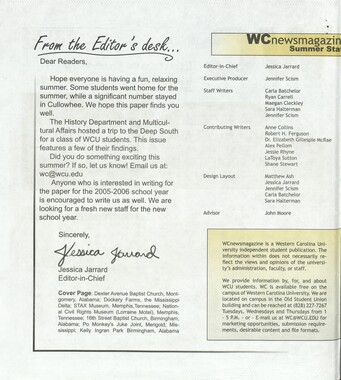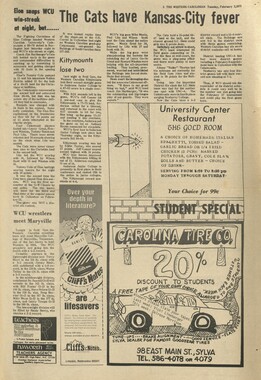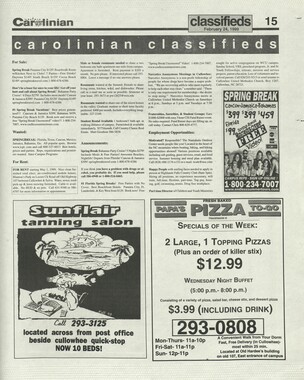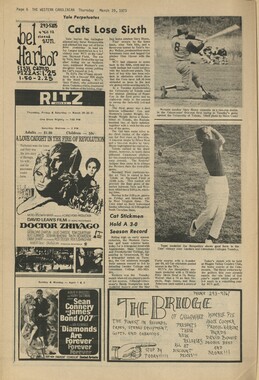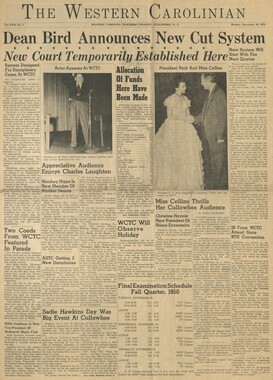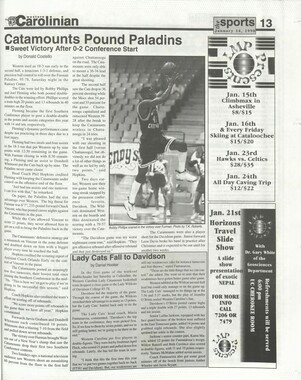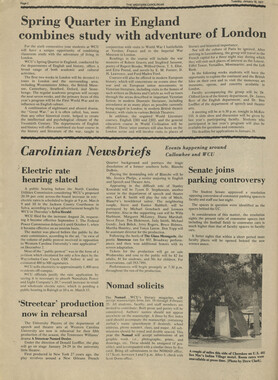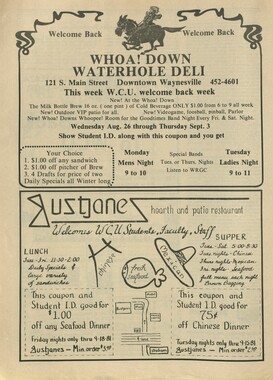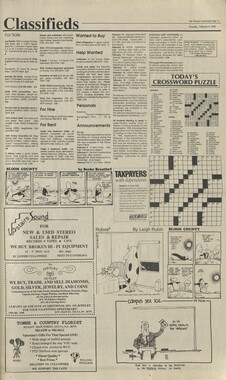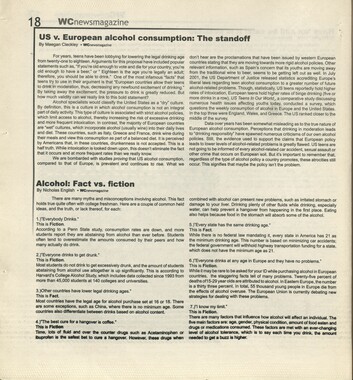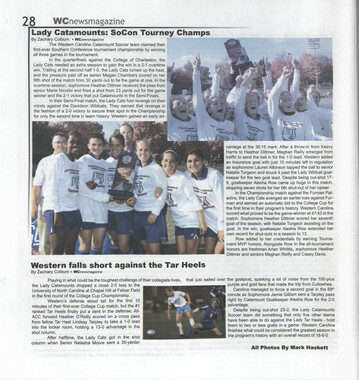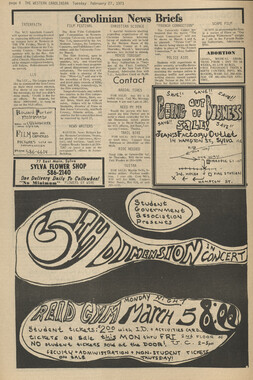Western Carolina University (20)
View all
- Canton Champion Fibre Company (2308)
- Cherokee Traditions (291)
- Civil War in Southern Appalachia (165)
- Craft Revival (1942)
- Great Smoky Mountains - A Park for America (2946)
- Highlights from Western Carolina University (430)
- Horace Kephart (941)
- Journeys Through Jackson (159)
- LGBTQIA+ Archive of Jackson County (85)
- Oral Histories of Western North Carolina (314)
- Picturing Appalachia (6873)
- Stories of Mountain Folk (413)
- Travel Western North Carolina (160)
- Western Carolina University Fine Art Museum Vitreograph Collection (129)
- Western Carolina University Herbarium (92)
- Western Carolina University: Making Memories (738)
- Western Carolina University Publications (2491)
- Western Carolina University Restricted Electronic Theses and Dissertations (146)
- Western North Carolina Regional Maps (71)
- World War II in Southern Appalachia (131)
University of North Carolina Asheville (6)
View all
- Allanstand Cottage Industries (62)
- Appalachian National Park Association (53)
- Bennett, Kelly, 1890-1974 (1463)
- Berry, Walter (76)
- Brasstown Carvers (40)
- Carver, George Washington, 1864?-1943 (26)
- Cathey, Joseph, 1803-1874 (1)
- Champion Fibre Company (233)
- Champion Paper and Fibre Company (297)
- Cherokee Indian Fair Association (16)
- Cherokee Language Program (22)
- Crowe, Amanda (40)
- Edmonston, Thomas Benton, 1842-1907 (7)
- Ensley, A. L. (Abraham Lincoln), 1865-1948 (275)
- Fromer, Irving Rhodes, 1913-1994 (70)
- George Butz (BFS 1907) (46)
- Goodrich, Frances Louisa (120)
- Grant, George Alexander, 1891-1964 (96)
- Heard, Marian Gladys (60)
- Kephart, Calvin, 1883-1969 (15)
- Kephart, Horace, 1862-1931 (313)
- Kephart, Laura, 1862-1954 (39)
- Laney, Gideon Thomas, 1889-1976 (439)
- Masa, George, 1881-1933 (61)
- McElhinney, William Julian, 1896-1953 (44)
- Niggli, Josephina, 1910-1983 (10)
- North Carolina Park Commission (105)
- Osborne, Kezia Stradley (9)
- Owens, Samuel Robert, 1918-1995 (11)
- Penland Weavers and Potters (36)
- Roberts, Vivienne (15)
- Roth, Albert, 1890-1974 (142)
- Schenck, Carl Alwin, 1868-1955 (1)
- Sherrill's Photography Studio (2565)
- Southern Highland Handicraft Guild (127)
- Southern Highlanders, Inc. (71)
- Stalcup, Jesse Bryson (46)
- Stearns, I. K. (213)
- Thompson, James Edward, 1880-1976 (226)
- United States. Indian Arts and Crafts Board (130)
- USFS (683)
- Vance, Zebulon Baird, 1830-1894 (1)
- Weaver, Zebulon, 1872-1948 (58)
- Western Carolina College (230)
- Western Carolina Teachers College (282)
- Western Carolina University (2008)
- Western Carolina University. Mountain Heritage Center (18)
- Whitman, Walt, 1819-1892 (10)
- Wilburn, Hiram Coleman, 1880-1967 (73)
- Williams, Isadora (3)
- Cain, Doreyl Ammons (0)
- Crittenden, Lorraine (0)
- Rhodes, Judy (0)
- Smith, Edward Clark (0)
- Appalachian Region, Southern (2569)
- Asheville (N.C.) (1923)
- Avery County (N.C.) (26)
- Blount County (Tenn.) (195)
- Buncombe County (N.C.) (1672)
- Cherokee County (N.C.) (283)
- Clay County (N.C.) (555)
- Graham County (N.C.) (236)
- Great Smoky Mountains National Park (N.C. and Tenn.) (519)
- Haywood County (N.C.) (3569)
- Henderson County (N.C.) (70)
- Jackson County (N.C.) (4912)
- Knox County (Tenn.) (35)
- Knoxville (Tenn.) (13)
- Lake Santeetlah (N.C.) (10)
- Macon County (N.C.) (420)
- Madison County (N.C.) (215)
- McDowell County (N.C.) (39)
- Mitchell County (N.C.) (132)
- Polk County (N.C.) (35)
- Qualla Boundary (982)
- Rutherford County (N.C.) (76)
- Swain County (N.C.) (2182)
- Transylvania County (N.C.) (270)
- Watauga County (N.C.) (12)
- Waynesville (N.C.) (86)
- Yancey County (N.C.) (72)
- Aerial Photographs (3)
- Aerial Views (60)
- Albums (books) (4)
- Articles (1)
- Artifacts (object Genre) (228)
- Bibliographies (1)
- Biography (general Genre) (2)
- Cards (information Artifacts) (38)
- Clippings (information Artifacts) (191)
- Copybooks (instructional Materials) (3)
- Crafts (art Genres) (622)
- Depictions (visual Works) (21)
- Design Drawings (1)
- Drawings (visual Works) (185)
- Envelopes (73)
- Exhibitions (events) (1)
- Facsimiles (reproductions) (1)
- Fiction (general Genre) (4)
- Financial Records (12)
- Fliers (printed Matter) (67)
- Glass Plate Negatives (381)
- Guidebooks (2)
- Internegatives (10)
- Interviews (815)
- Land Surveys (102)
- Letters (correspondence) (1013)
- Manuscripts (documents) (618)
- Maps (documents) (177)
- Memorandums (25)
- Minutes (administrative Records) (59)
- Negatives (photographs) (6090)
- Newsletters (1290)
- Newspapers (2)
- Notebooks (8)
- Occupation Currency (1)
- Paintings (visual Works) (1)
- Pen And Ink Drawings (1)
- Periodicals (193)
- Personal Narratives (10)
- Photographs (12976)
- Plans (maps) (1)
- Poetry (5)
- Portraits (4568)
- Postcards (329)
- Programs (documents) (181)
- Publications (documents) (2443)
- Questionnaires (65)
- Relief Prints (26)
- Sayings (literary Genre) (1)
- Scrapbooks (282)
- Sheet Music (2)
- Slides (photographs) (402)
- Songs (musical Compositions) (2)
- Sound Recordings (796)
- Specimens (92)
- Speeches (documents) (18)
- Tintypes (photographs) (8)
- Transcripts (322)
- Video Recordings (physical Artifacts) (23)
- Text Messages (0)
- A.L. Ensley Collection (275)
- Appalachian Industrial School Records (7)
- Appalachian National Park Association Records (336)
- Axley-Meroney Collection (2)
- Bayard Wootten Photograph Collection (20)
- Bethel Rural Community Organization Collection (7)
- Blumer Collection (5)
- C.W. Slagle Collection (20)
- Canton Area Historical Museum (2110)
- Carlos C. Campbell Collection (462)
- Cataloochee History Project (64)
- Cherokee Studies Collection (4)
- Daisy Dame Photograph Album (5)
- Daniel Boone VI Collection (1)
- Doris Ulmann Photograph Collection (112)
- Elizabeth H. Lasley Collection (1)
- Elizabeth Woolworth Szold Fleharty Collection (4)
- Frank Fry Collection (95)
- George Masa Collection (173)
- Gideon Laney Collection (452)
- Hazel Scarborough Collection (2)
- Hiram C. Wilburn Papers (28)
- Historic Photographs Collection (236)
- Horace Kephart Collection (861)
- Humbard Collection (33)
- Hunter and Weaver Families Collection (1)
- I. D. Blumenthal Collection (4)
- Isadora Williams Collection (4)
- Jesse Bryson Stalcup Collection (47)
- Jim Thompson Collection (224)
- John B. Battle Collection (7)
- John C. Campbell Folk School Records (80)
- John Parris Collection (6)
- Judaculla Rock project (2)
- Kelly Bennett Collection (1482)
- Love Family Papers (11)
- Major Wiley Parris Civil War Letters (3)
- Map Collection (12)
- McFee-Misemer Civil War Letters (34)
- Mountain Heritage Center Collection (4)
- Norburn - Robertson - Thomson Families Collection (44)
- Pauline Hood Collection (7)
- Pre-Guild Collection (2)
- Qualla Arts and Crafts Mutual Collection (12)
- R.A. Romanes Collection (681)
- Rosser H. Taylor Collection (1)
- Samuel Robert Owens Collection (94)
- Sara Madison Collection (144)
- Sherrill Studio Photo Collection (2558)
- Smoky Mountains Hiking Club Collection (616)
- Stories of Mountain Folk - Radio Programs (374)
- The Reporter, Western Carolina University (510)
- Venoy and Elizabeth Reed Collection (16)
- WCU Gender and Sexuality Oral History Project (32)
- WCU Mountain Heritage Center Oral Histories (25)
- WCU Oral History Collection - Mountain People, Mountain Lives (71)
- WCU Students Newspapers Collection (1923)
- Western North Carolina Tomorrow Black Oral History Project (69)
- William Williams Stringfield Collection (2)
- Zebulon Weaver Collection (109)
- African Americans (390)
- Appalachian Trail (35)
- Artisans (521)
- Cherokee art (84)
- Cherokee artists -- North Carolina (10)
- Cherokee language (21)
- Cherokee pottery (101)
- Cherokee women (208)
- Church buildings (189)
- Civilian Conservation Corps (U.S.) (111)
- College student newspapers and periodicals (2012)
- Dams (107)
- Dance (1023)
- Education (222)
- Floods (61)
- Folk music (1015)
- Forced removal, 1813-1903 (2)
- Forest conservation (220)
- Forests and forestry (1184)
- Gender nonconformity (4)
- Great Smoky Mountains National Park (N.C. and Tenn.) (181)
- Hunting (45)
- Landscape photography (25)
- Logging (119)
- Maps (83)
- Mines and mineral resources (8)
- North Carolina -- Maps (18)
- Paper industry (38)
- Postcards (255)
- Pottery (135)
- Railroad trains (72)
- Rural electrification -- North Carolina, Western (3)
- School integration -- Southern States (2)
- Segregation -- North Carolina, Western (5)
- Slavery (5)
- Sports (452)
- Storytelling (243)
- Waterfalls -- Great Smoky Mountains (N.C. and Tenn.) (66)
- Weaving -- Appalachian Region, Southern (280)
- Wood-carving -- Appalachian Region, Southern (328)
- World War, 1939-1945 (173)
Western Carolinian Volume 68 Number 06
Item
Item’s are ‘child’ level descriptions to ‘parent’ objects, (e.g. one page of a whole book).
-
-
High-Protein Diet Hinders Athletes By Martin Miller | Los Angeles Times Athletes who adopt a high-protein, low-carbohydrate diet may hurt their performance, not enhance it, sports nutritionists say. For years, such diets have attracted throngs of athletes, from high school to professional levels, who seek to build muscle and drop unwanted pounds. Although conceding that the diet may well lead to weight loss, sports nutritionists warn that it may not be the kind of weight athletes want to lose. Instead of taking off fat, athletes on the diet who train vigorously and compete regularly probably are shedding muscle mass. Its a trendy diet that is a big mistake for athletes, said Chris Rosenbloom, an associate professor of nutrition at Georgia State University. They find out eventually that their bodys run out of fuel too quickly. The mainstream appeal of many low-carbohydrate diets has helped promote the popularity of similar eating programs among athletes, who are constantly seeking a competitive edge. Leading health and fitness magazines reinforce the diets appeal by bombarding athletes with ads trumpeting carb-free energy drinks, zero-carb energy bars and low- carb nutrition shakes. ee Saunlvai BLACKCAT: _ Black Cat Cocktail _ Buddies ($9.95 for 50), made by Accoutrements for Lounge Living, _ contribute a certain tacky tone to any Halloween cocktail part 2003 Washington Post photo : by h Julia Ew But carbohydrates are essential to athletic performance because they are converted into glucose, which is needed to power muscles. Carbohydrates stimulate the production of insulin, which helps release amino acids into muscles so they can be built, maintained and repaired. Carbohydrates also supply more energy for muscles and do it more efficiently than either proteins or fats, nutritionists say. Eating enough carbohydrates is crucial for almost any activity regardless of the fitness level of the athlete especially if the exerciser has low body fat and is unable to call upon fat reserves for energy. Nutritionists also caution athletes against accepting dietary recommendations from personal trainers who dont have proper credentials or certifications. You want your diets based on research, said Rosenbloom, who has consulted with the Atlanta Hawks pro basketball team. Not on what some guy tells you at the gym. Although athletes differ, sports nutritionists say a good general guideline for a sports diet is to consume S to 7 grams of carbohydrates and 1.2 to 1.5 grams of protein for each kilogram of body weight. (In nonmetric terms, the equivalent is 0.16 to 0.22 ounces of carbohydrate and 0.04 to 0.05 ounces of protein for each 2.2 pounds of body weight.) At minimum, athletes need to eat at least 500 total grams (about a pound) of carbs each day. 2003 LA TIMES Eating Right: Super-Size That Salad By Sally Squires | The Washington Post Imagine adding a super-sized course to your meal that actually trims calories from the bottom line. You probably think its too good to be true. Wrong again. Findings presented this week by Pennsylvania State University researchers at the annual meeting of the North American Association for the Study of Obesity found that starting lunch with a healthy salad reduced the total calories people consumed in the meal. The seven-week study of 42 people found that participants who ate three cups of low-calorie salad as a first course wound up eating fewer calories at the meal than those who skipped the salad. The findings are surprising because usually adding variety to a meal by adding an extra course tends to make people eat more, said Barbara Rolls, professor of nutrition at Penn State and lead author of the study. Heres how to apply these results to daily life: Keep it low-fat. The study looked at six salads varying in size, calories and fat. The lowest-fat saladsthose with 14 percent of calories from fatworked best at reducing overall food consumption. Size matters. In the study, larger salads were better than smaller ones at shaving calories from the meal. Eating three cups of low-fat salads resulted in a 12 percent overall reduction in lunch calories compared with 7 percent fewer calories for those who ate | 1/2 cups of salad. Best (and most surprising) news: Participants felt equally full on three cups of salad, whether it contained 100 or 400 calories. Watch the tipping point. The study found that a salad of about 100 calories had the most effect at reducing overall calories for the meal. As calories crept to 200, with moderate fat, there was either no change in total meal calorie consumption or a slight increase in calories. High-fat salads of 200 calories or more actually resulted in higher total calories at lunch, up to 145 more. Thats another reason, Rolls says, to load up on the low-cal veggiesand not the cheese and (high-fat) dressing. Pile on the greens. Theyre filled with flavor, water, fiber and plenty of phytonutrients, minerals and vitamins and have about five calories per cup. Plus, three cups of greens provide three of the five to nine servings per day of fruit and vegetables recommended by the National Cancer Institute. In the study, salads were made of Romaine and iceberg lettuce, carrots, tomatoes, celery and cucumbers (as well as small amounts of cheese and dressing). But any combination of greens and other water-filled vegetables will likely do. The bigger the vegetable volume, the bigger the impact of this first course, Rolls says. Savor the flavor. Participants in the study got 20 minutes to eat their first-course salads more than many people take to eat their entire lunch at their desks. Research suggests that eating slowly gives your stomach time to send satiety signals to the brain. Ask for the dressing on the side. That puts portion control in your court, not the restaurants. Study participants got one to three tablespoons of dressing on their saladsfar less than most restaurants slather onyet they still reported feeling full afterward. The fullness wasnt affected by the calories, only by the portion, Rolls says. Go ahead, try the low-fat dressing and cheese. While taste has driven a lot of consumers away from low-calorie or low-fat dressings, the Penn State study found that participants had trouble detecting the reduced-fat dressings. The low-fat products have just gotten much better in taste, Rolls says. Avoid the croutons. Thats because they tend to be high in calories. And theyre missing the water found in the greens and other vegetables, so theyre less likely to fill you up. What I like about what McDonalds has done with their salads is that theyve put croutons and dressing in separate packets and given consumers choices about ordering grilled or fried chicken for their salads, Rolls says. People need to decide themselves about the optional fat. 2003 WASHINGTON POST ra inf k TC te Det ' THT CaiR
Object
Object’s are ‘parent’ level descriptions to ‘children’ items, (e.g. a book with pages).
-
The Western Carolinian is Western Carolina University's student-run newspaper. The paper was published as the Cullowhee Yodel from 1924 to 1931 before changing its name to The Western Carolinian in 1933.
-
